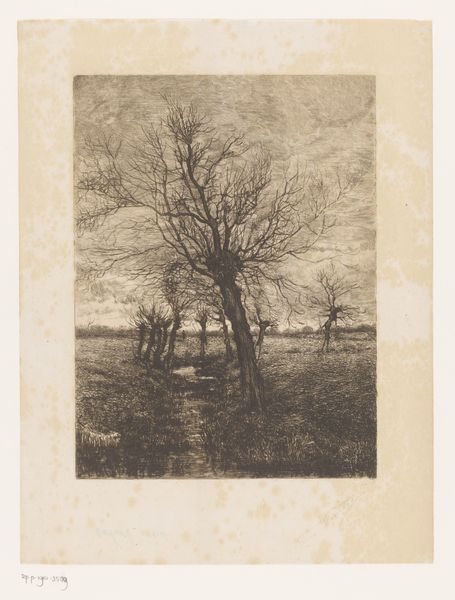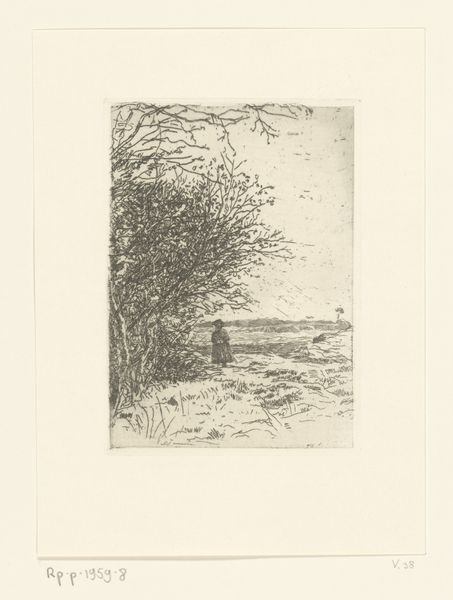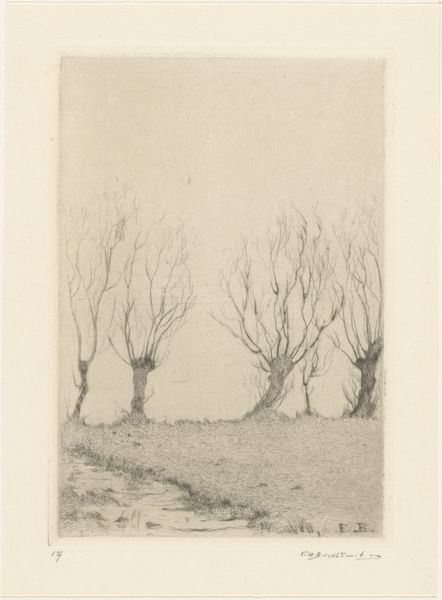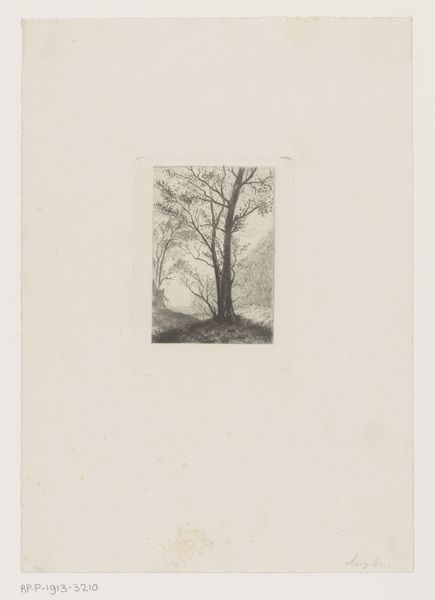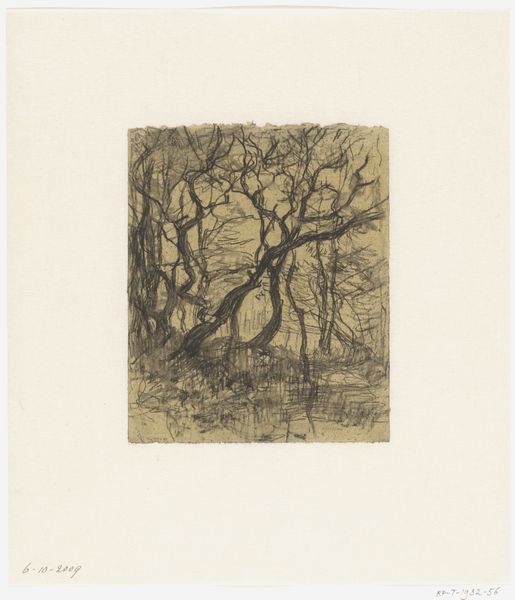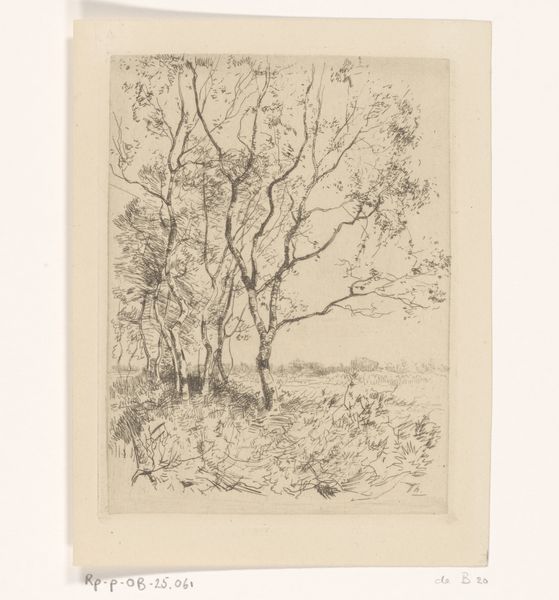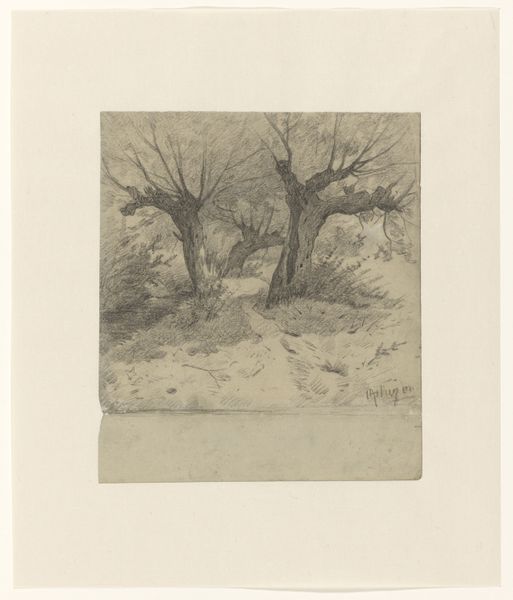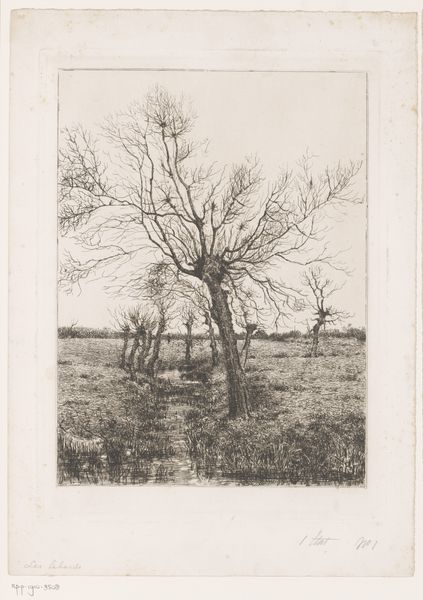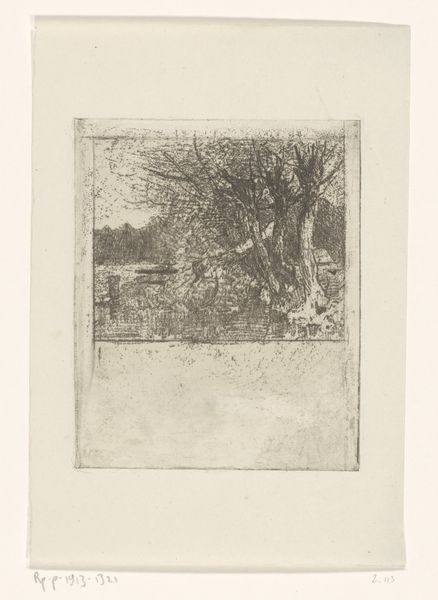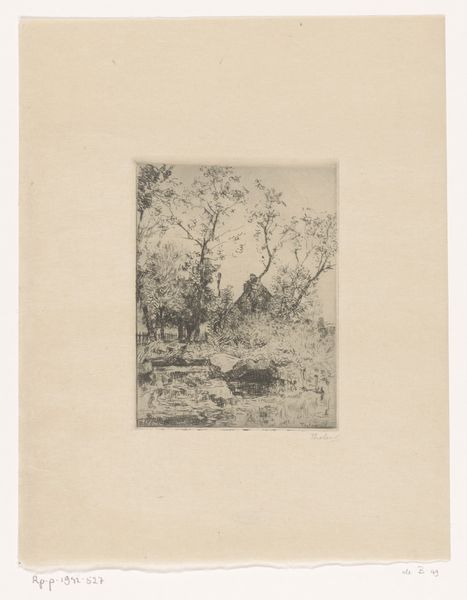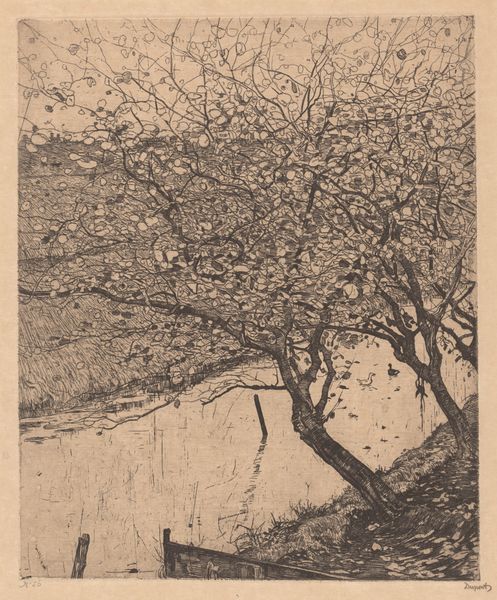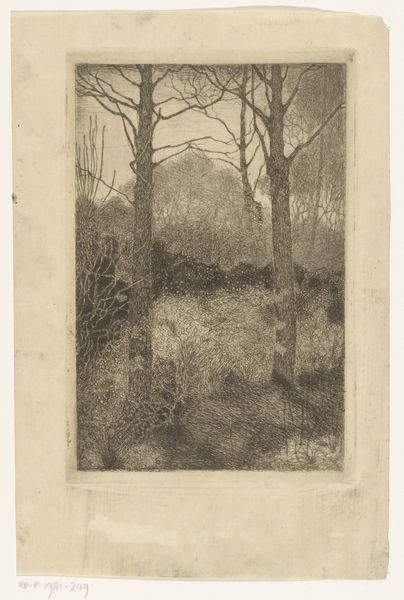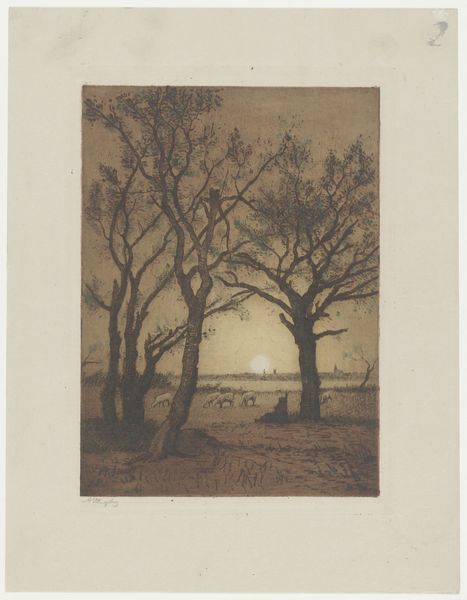
Dimensions: height 416 mm, width 298 mm
Copyright: Rijks Museum: Open Domain
Curator: This is "Bloeiende boom voor heg," or "Flowering Tree in Front of a Hedge," created by Simon Moulijn in 1897. It's a drawing, and he seems to have made it en plein air. Editor: It’s delicate. It's hard to believe that much detail comes from something that feels so transitory, almost like catching a memory of a place more than the place itself. The tonal variations in the mark-making almost wash out the details on the tree! Curator: Exactly! Consider the materiality of that drawing. We're talking about readily accessible materials, yes, but used with intention for the plein air movement. Think about what it meant to democratize landscape art by shifting from studio practice to being on site! Editor: Right. The move outdoors becomes a critical shift. This simple drawing, and countless works like it, break down hierarchies—bringing landscape into the everyday. The intimacy of this drawing suggests a connection to nature that isn't about taming it or putting it on display. I see it speaking to late 19th century anxieties, and maybe a retreat to more natural spaces in a quickly industrializing Europe. Curator: Good point. It also invites us to rethink landscape as a crafted, humanized thing. A park isn’t simply nature; it involves labor and design. What can look “natural” only seems that way after lots of people put in the effort! We can see it from the hedge itself. It's made out of material, tended to by laborers, arranged, trimmed. Moulijn almost gives a glimpse of all of it. Editor: It humanizes a moment that we now might associate with romantic escape, perhaps! What seemed available or "natural" almost certainly came at a cost for laborers, especially those women whose labor was often essential to flower farms and estate gardens. Curator: Right! It’s a drawing about the tension of a world rapidly changing. So many drawings, so many trees and plants. An entire industry of reproduction sprung out of creating “nature” for people. The original almost disappears beneath the wave of mass consumption. Editor: It encourages us to look at our environments as products of culture, and hopefully, recognize what labor or material impacts might lie behind these idyllic images. Curator: Exactly. Maybe we can start noticing those things a little bit better ourselves. Editor: Yes. Thank you for the discussion.
Comments
No comments
Be the first to comment and join the conversation on the ultimate creative platform.
